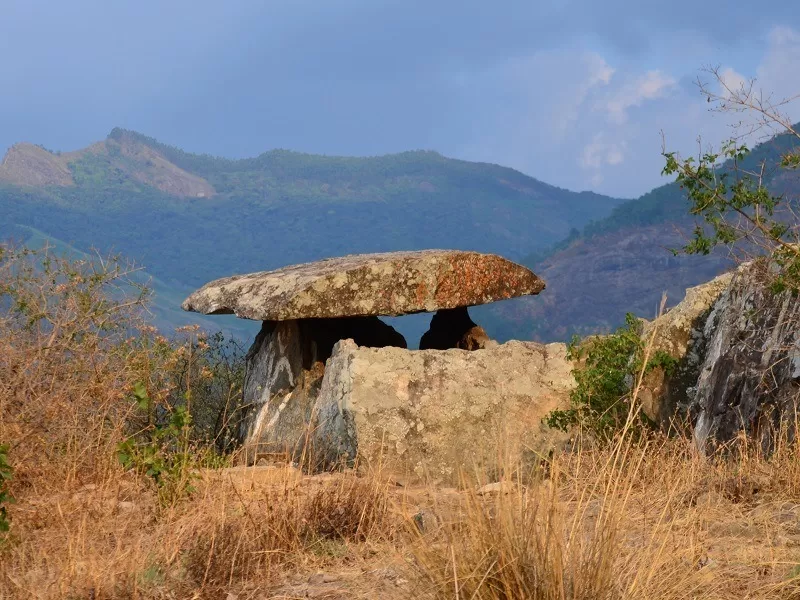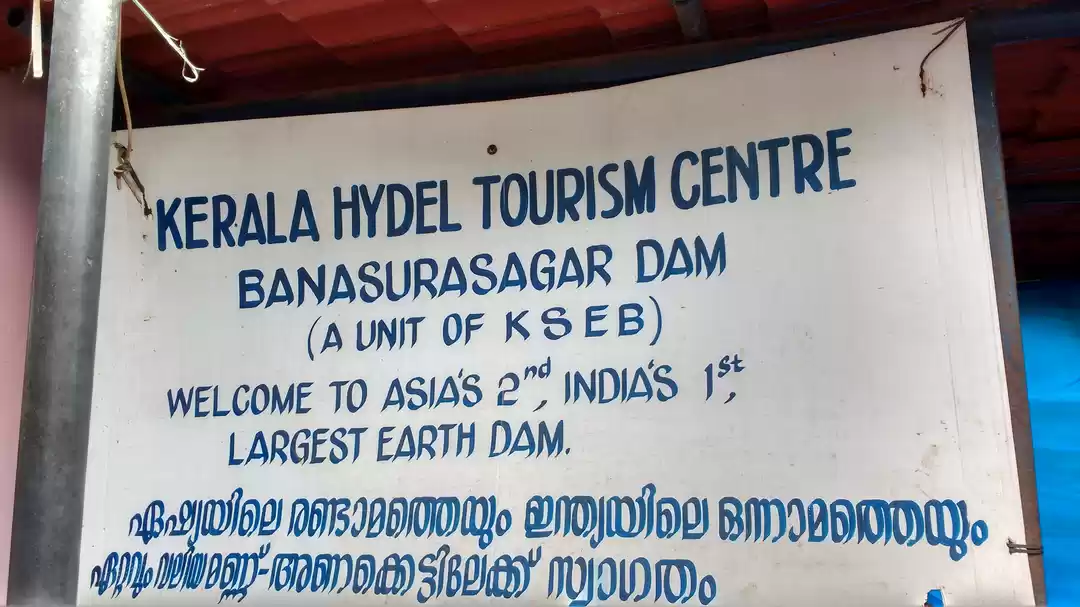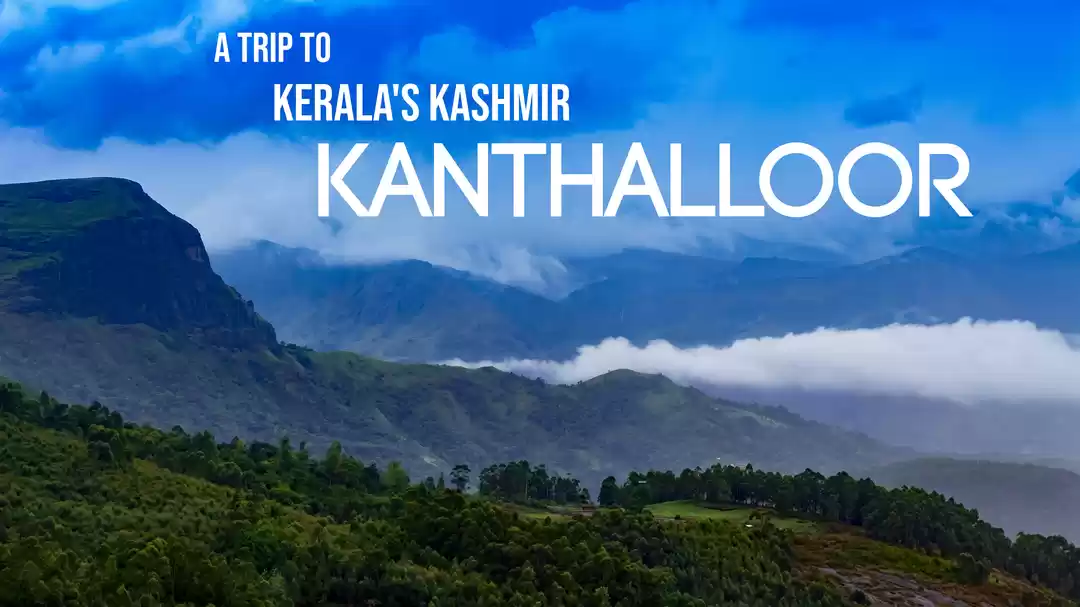If you are looking for a destination that offers a blend of nature, adventure, and heritage, then Marayoor is the place for you. Marayoor is a scenic and historic town near Munnar, in the Idukki district of Kerala. It is famous for its prehistoric sites, sandalwood forest, sugarcane farms, and waterfalls.
Marayoor is also a great base to explore the nearby attractions in the Western Ghats, such as Munnar, Chinnar, Kanthalloor, Eravikulam, and Top Station. In this article, we will tell you everything you need to know about Marayoor tourism, sightseeing, and travel guide. We will also give you some tips and recommendations for different types of travellers, such as families, solo travellers, couples, and groups.
Marayoor’s Attractions and Activities
Marayoor has a lot to offer to the visitors who want to experience its natural and cultural beauty. Here are some of the main attractions and activities that you can enjoy in Marayoor:

Muniyara Dolmens
Muniyara Dolmens are ancient burial chambers that date back to the Megalithic age. They are made of large stone slabs that form a box-like structure. There are more than 90 dolmens in Marayoor, spread across different locations. The most famous ones are located at Kovilkadavu, near the sandalwood forest. These dolmens are believed to be the resting places of the ancestors of the local tribes, who lived in Marayoor thousands of years ago. You can visit these dolmens and marvel at the craftsmanship and mystery of these ancient structures.

Sandalwood Forest
Sandalwood Forest is a rare and protected forest that is home to many animals and birds. It is the only natural sandalwood forest in Kerala, and one of the few in India. The sandalwood trees are known for their fragrant and valuable wood, which is used for various purposes, such as perfumes, medicines, and religious rituals. The forest is also a habitat for many endangered species, such as the Indian elephant, tiger, leopard, gaur, sambar, and spotted deer. You can take a guided tour of the forest and learn about the ecology and conservation of the sandalwood trees. You can also spot some wildlife and birds, such as the Malabar giant squirrel, hornbill, woodpecker, and peacock.

Thoovanam Waterfalls
Thoovanam Waterfalls is a scenic waterfall inside the Chinnar Wildlife Sanctuary. It is formed by the Pambar river, which cascades down from a height of about 40 meters. The waterfall is surrounded by lush greenery and rocky cliffs, creating a picturesque view. You can reach the waterfall by taking a trek of about 4 km from the Alampetty check post. The trek is moderate and offers a chance to enjoy the nature and wildlife of the sanctuary. You can also take a dip in the pool at the base of the waterfall and refresh yourself.

Marayoor Jaggery
Marayoor Jaggery is a local delicacy made from sugarcane. It is a type of solid molasses that is known for its taste and health benefits. Marayoor is famous for its sugarcane farms, which produce a variety of sugarcane that is rich in iron and minerals. The jaggery is made in traditional ways, by boiling the sugarcane juice in large pots and then cooling and shaping it into blocks. You can visit the jaggery units and watch the process of making the jaggery. You can also buy some jaggery and taste the sweetness of Marayoor.
Rajiv Gandhi Children’s Park
Rajiv Gandhi Children’s Park is a fun and educational park for children to play and learn. It is located near the Marayoor bus stand, and covers an area of about 10 acres. The park has various facilities and attractions, such as a playground, a mini zoo, a museum, a library, and a science park. The park also has a replica of the Muniyara Dolmens, which gives an insight into the history and culture of Marayoor. The park is a great place for children to have a good time and gain some knowledge.
Anamudi Peak
Anamudi Peak is the highest peak in South India, and the second highest in India. It is located in the Eravikulam National Park, about 40 km from Marayoor. It has an elevation of about 2,695 meters, and offers stunning views of the Western Ghats and the plains of Tamil Nadu. The peak is also a biodiversity hotspot, with many endemic and endangered species of flora and fauna. You can trek to the peak from the base camp at Rajamala, which is about 15 km away. The trek is challenging and requires permission from the forest department. The trek is a rewarding experience for adventure lovers and nature enthusiasts.
Fun Forest Adventure Park
Fun Forest Adventure Park is a thrilling and adventurous park that offers aerial games and zip lines. It is located near the Anachal town, about 20 km from Marayoor. The park has various activities and courses, such as rope bridges, swinging tires, bamboo rafting, rock climbing, and rappelling. The park also has a zip line that spans across a valley, giving a bird’s eye view of the landscape. The park is a great place for adrenaline junkies and fun seekers.
Marayoor’s Nearby Destinations
Marayoor is also a great base to explore the nearby destinations in the Western Ghats, which are equally beautiful and diverse. Here are some of the nearby destinations that you can visit along with Marayoor:

Munnar
Munnar is a popular hill station that is famous for its tea plantations, spice gardens, and wildlife. It is located about 40 km from Marayoor, and has a pleasant climate throughout the year. Munnar has many attractions and activities, such as the Tea Museum, the Mattupetty Dam, the Eravikulam National Park, the Attukad Waterfalls, the Echo Point, and the Kundala Lake. You can also enjoy some adventure sports, such as paragliding, cycling, and camping. Munnar is a must-visit destination for anyone who loves nature and tranquility.
Chinnar
Chinnar is a wildlife sanctuary that is home to many endangered species, such as the grizzled giant squirrel and the star tortoise. It is located about 20 km from Marayoor, and has a dry and deciduous forest. Chinnar has many attractions and activities, such as the Chinnar River, the Watch Tower, the Thoovanam Waterfalls, the Hanging Bridge, and the Cultural Centre. You can also take a wildlife safari, a nature walk, or a tribal visit. Chinnar is a perfect destination for wildlife lovers and culture enthusiasts.

Kanthalloor
Kanthalloor is a village that is known for its fruit orchards, vegetable farms, and terraced fields. It is located about 25 km from Marayoor, and has a cool and pleasant climate. Kanthalloor has many attractions and activities, such as the Apple Farm, the Orange Farm, the Strawberry Farm, the Pampadum Shola National Park, the Anayirankal Dam, and the Neelakurinji Hills. You can also enjoy some trekking, camping, or fishing. Kanthalloor is a ideal destination for agritourism and ecotourism.
Eravikulam
Eravikulam is a national park that is home to the endangered Nilgiri tahr, a mountain goat. It is located about 45 km from Marayoor, and has a high altitude grassland. Eravikulam has many attractions and activities, such as the Rajamala, the Anamudi Peak, the Lakkom Waterfalls, the Kurinji Trail, and the Neelakurinji Flowers. You can also take a safari, a trek, or a nature walk. Eravikulam is a wonderful destination for wildlife lovers and nature lovers.

Top Station
Top Station is a viewpoint that offers panoramic views of the Western Ghats and the Tamil Nadu plains. It is located about 50 km from Marayoor, and has an elevation of about 1,880 meters. Top Station has many attractions and activities, such as the Munnar-Kodaikanal Road, the Kurangani Hills, the Kolukkumalai Tea Estate, and the Neelakurinji Flowers. You can also enjoy some photography, sightseeing, or camping. Top Station is a spectacular destination for scenic lovers and adventure lovers.
Marayoor is a hidden gem in Kerala’s Western Ghats, that offers a blend of nature, adventure, and heritage. It has many attractions and activities that cater to different types of travellers, such as families, solo travellers, couples, and groups. It is also a great base to explore the nearby destinations in the Western Ghats, which are equally beautiful and diverse. Marayoor is a destination that you should not miss if you are looking for a memorable and enriching travel experience.
We hope you enjoyed reading this article and found it useful and informative. If you have any feedback, comments, or questions, please feel free to share them with us.
We would love to hear from you. You can also contact us for more information or booking assistance. We are here to help you plan your perfect trip to


























